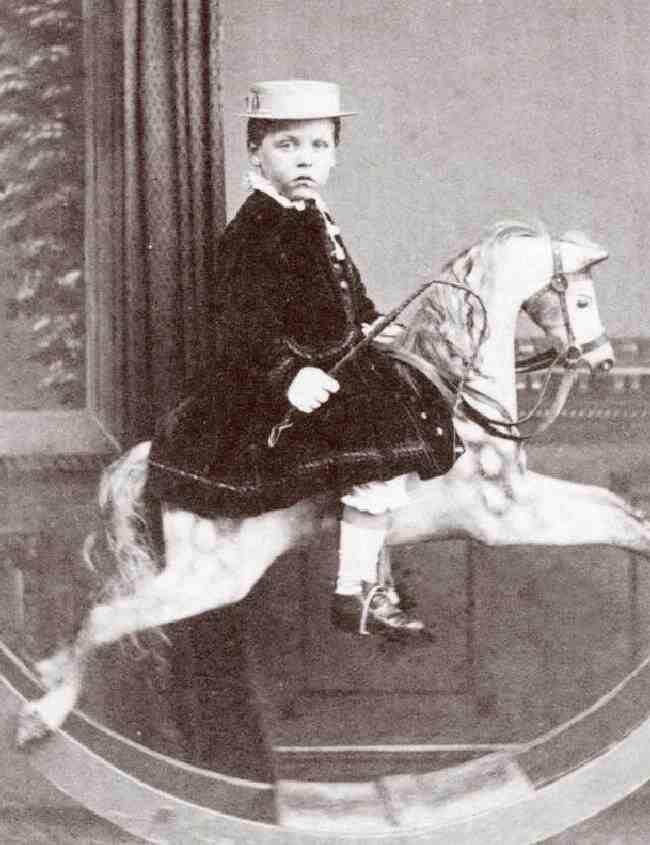
Hobby, Rocking, and Stick Horses: Gender--Position

Figure 1.-- This CDV portrait was probably taken in the 1860s. The portrait was taken at the studio of J.Simnet at Burton on Trent, England. The child is unidentified, but we believe he is a boy. He wears a black dress which appears to have front buttons. Notice the bloomers which unlike pantalttes are blouced. Image courtesy of the MD collection.
|
We believe, for example, that a child in a dress siting astride a hobbyhorse or stuffed animal may likely be a boy. A good example here is a family portrit of the French De Lesseps family. We have, however, insufficent information at this time to say with authority that this is a strong indicator. Many of the available images are not identified. For those images that are identified, virtually all of the children in skirted garments riding astride are boys. We do note some boys in skirted garments posed side saddle, but we are not sure precisely why. We think it was probably more likely a position simply to take a portrait. Most of the boys not yet breachd sit astride the hobby horses in the portraits we have noted. This is fairly well established. The portrait seen here is a boy wearing a black dress. Wethought at first he was wearing a tunic, but on closer inspection it seems to be a black dress with a matching black jacket. He was photographed with his hat on whih was fairly uncommon in the hobby horse portraits that we have notd. He is riding the hobby horse in a astride position (figure 1). We are less sure about how girls rode hobby horses, in part because we have relatively few portraits of girls on hobby horses.
HBC

Navigate the Boys' Historical Clothing Web Site:
[Return to the Main hobby horse boy gender indicator page]
[Introduction]
[Activities]
[Biographies]
[Chronology]
[Clothing styles]
[Countries]
[Theatricals]
[Bibliographies]
[Contributions]
[FAQs]
[Glossaries]
[Satellite sites]
[Tools]
[Boys' Clothing Home]
Created: July 1, 2003
Last updated: July 1, 2003



